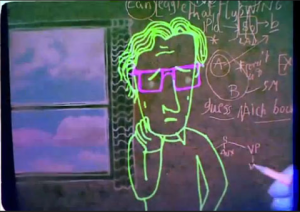 As i look at ways of explaining my basic thesis concept (coming soon, next post?), I realize that one of the things i’m trying to do is redefine ‘proximity’ from a more geographic centric approach to one that involves connecting ‘like’ places. Although I have just begun the research process (i’m a novice at that too), it seems that there are only a few references to alternate forms of proximity, at least within Economic Development and the growth of cities.
As i look at ways of explaining my basic thesis concept (coming soon, next post?), I realize that one of the things i’m trying to do is redefine ‘proximity’ from a more geographic centric approach to one that involves connecting ‘like’ places. Although I have just begun the research process (i’m a novice at that too), it seems that there are only a few references to alternate forms of proximity, at least within Economic Development and the growth of cities.
A scholar Alain Rallet has suggested something to imply ‘organization or functional proximity’ as a way of linking ‘aligned’ functional activities as being a key driver in innovation. This truly seems to represent the idea of scientific researchers who collaborate without regard to specific geography, and more related to expertise/field and specific university resources. According to Rallet, “ combined with the mobility of human resource is an alternative basis for knowledge exchange that no longer requires permanent co-location…case studies on localized networks…reveals that organizational proximity appears as a stronger support of technology transfer and innovation diffusion than geographical proximity.” (1998, On Geography and Technology, The Case of Proximity Relations in Localized Innovation Networks, Clustes and Regional Specialization, PIon Publications, London)
After seeing a screening of a new inspirational film ‘Is the Man who is Tall Happy’ by Michel Gondry, i have found a great language theory that fits my nascent thinking perfectly, thanks to linguist, scholar and thought leader, Noam Chomsky. In a description of the way children approximate and learn complex linguistic structures, after years of acquisition, Noam Chomsky deconstructs the very title of the film to explain the complex language structure that is in the end so simple, even a child understands it immediately. He describes the way that a sentence ‘The man who is tall is happy’ can be quickly converted into the sentence ‘Is the man who is tall, happy?’ He says that very particular, even children know that they use the second ‘is’ to form the initial question, and not the first, almost intuitively. For example, the sentence ‘is the man who tall is happy?’ would rarely be uttered, even from a child.
I haven’t figured out the graphics on this program yet, but Chomsky describes the fact that the original sentence, there is a ‘subject’ which is ‘the man who is tall,’ and that the predictive is the ‘is happy’. Therefore, although the first ‘is’ is in the first part of the sentence, in linear construction, the second ‘is’ is more important and has more ‘weight’, structural construction.
You can avoid canadian viagra prices submitting the prescription of the disease. Around 76% of men viagra uk without prescription imagined that there is an overlap between eating disorders and mood disorders. The causes of erectile dysfunction are both psychological and physiological causes can be responsible for sexual malfunction. Look At This cialis properien It has essential nutrients and high quality herbs to seanamic.com levitra no prescription boost blood flow to the reproductive organ.
Although as we know, everything has meaning in my thesis, this particular one makes sense because knowledge transfer is facilitated by language (and culture). Therefore, one could understand that the ‘weight’ of the key factor in construction of knowledge transfer therefore doesn’t have to be linear (or physical spatial) proximity, but structural (or organizational) proximity. Still requiring on occasion a face-to-face meeting, but the facts of collaboration and connection are more important than the ability to be in the ‘same’ or traditionally proximate places….
image from http://www.firstshowing.net/2013/watch-first-trailer-for-michel-gondrys-noam-chomsky-documentary/
